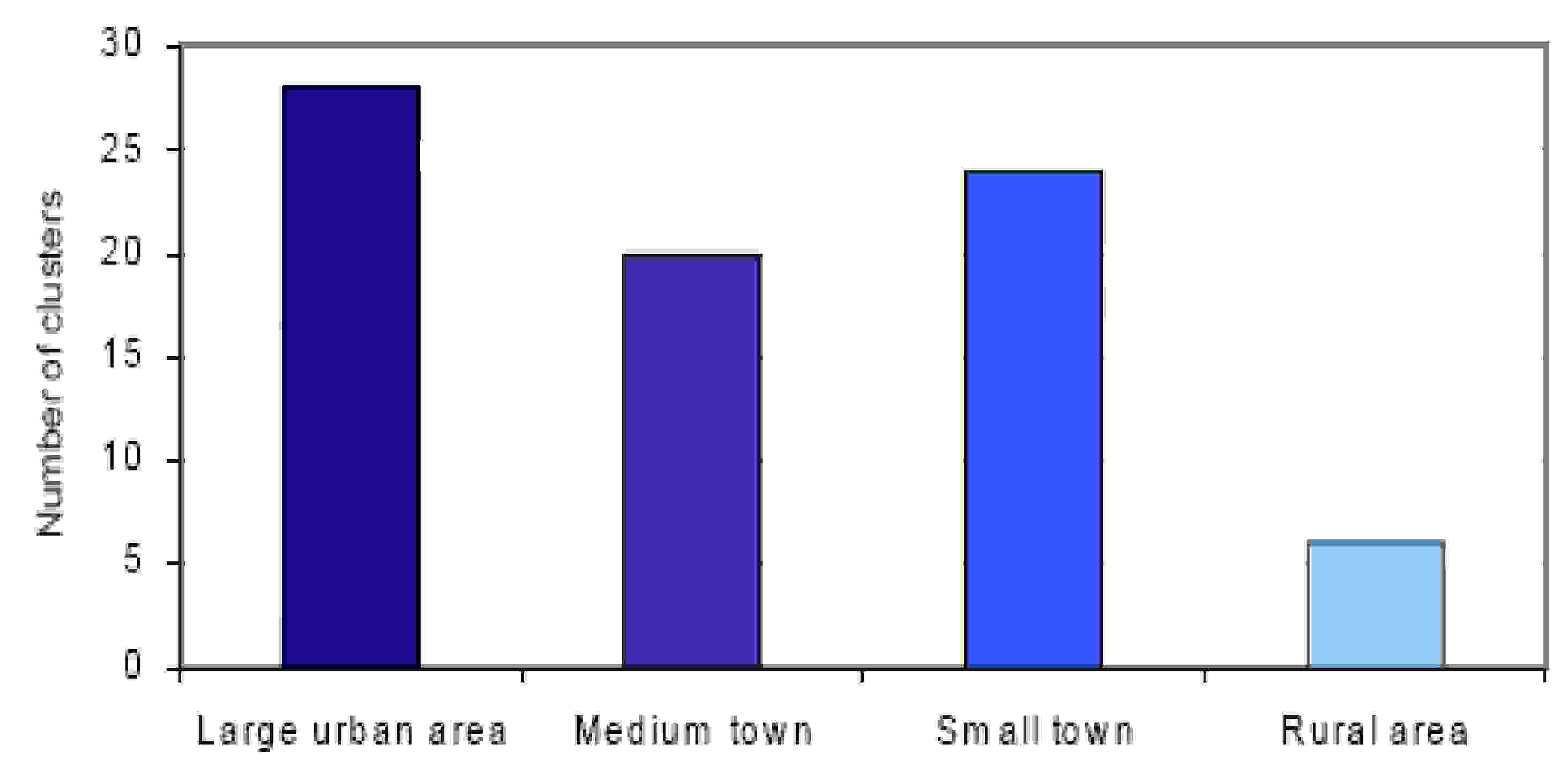| << Chapter < Page | Chapter >> Page > |
These groupings of companies suggest that much of the competitive advantage enjoyed by their members lies outside the firm (Porter 2000), such that the ‘ the whole is greater than the sum of the parts ’. Porter describes how ‘clustering’ can help the productivity of both firms and regions in a number of ways:
Elsewhere Porter and Stern (1999) provide a formal definition of the concept (which is also used by the DTI (2001);
‘ Clusters are geographically proximate groups of interconnected companies, industries, and associated institutions in a particular field, linked by commonalities and complementarities .
As the definition suggests a cluster does not include solely competing firms, but is a much broader phenomenon, which “ extend(s) downstream to channels or customers and laterally to manufacturers of complementary product (and services) or companies related by skills, technologies or common inputs ” (Porter 2000). This encompasses the roles of other stakeholders within clusters including universities, trade associations and government.
Porter and Stern (1998) also point out that not all actors within a cluster are necessarily aligned with a particular industry, though rather they come together to support each other’s innovative activity. However, when considering a cluster it should be done with regard to the sector under investigation as aggregation to the level of industry or broad groupings such as ‘manufacturing’ or ‘high-technology’ lose the meaning of the connections and interrelationships.
Clusters exist in all manner of industries, though are of particular interest in knowledge-driven sectors because of the importance of localised skills and tacit knowledge spillovers. Clusters differ from networks in that they do not rely on any formal or informal organisation of actors such as chambers of commerce, industrial fora etc. (EU 2003). Furthermore, clusters are not necessarily dominated by large companies: an EC study (EU 2003) shows that they typically involve a mix of small and large firms, as shown in [link] .

Clusters historically often developed around a natural resource, such as mineral deposits or a natural harbour, or a large market, such as towns or cities ( [link] ). This last influence is still reflected in the European Commission study of European clusters, which shows most exist in urban settings (EU 2003);

Many clusters have developed around the availability of knowledge in the region and this is evermore important in the modern Knowledge Economy sectors. This leads to co-location of firms, the spin-off and start-up of new related firms and the development of other businesses to support their activities, and the growth of a cluster. The nature of such firms is not just competitive and often occurs with overlap between sectors (e.g., venture capitalists, patent attorneys, recruitment agencies, accountancy firms etc.). The interrelationships that give rise to this are presented in Porter’s ‘Diamond’ Model shown in [link] .

Notification Switch
Would you like to follow the 'A study of how a region can lever participation in a global network to accelerate the development of a sustainable technology cluster' conversation and receive update notifications?